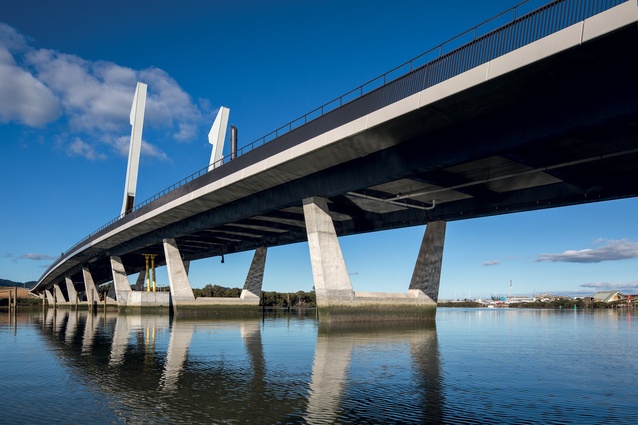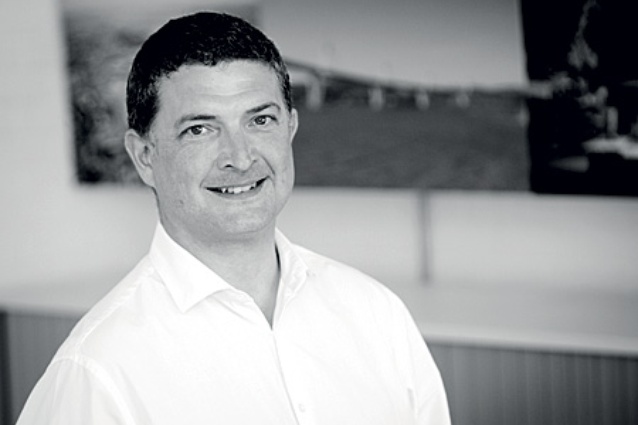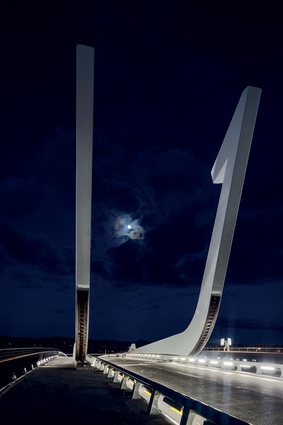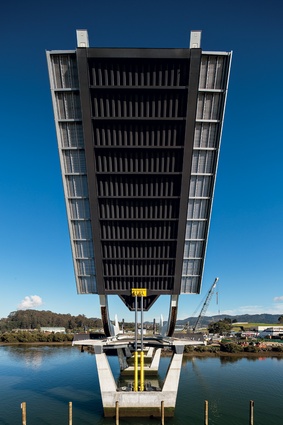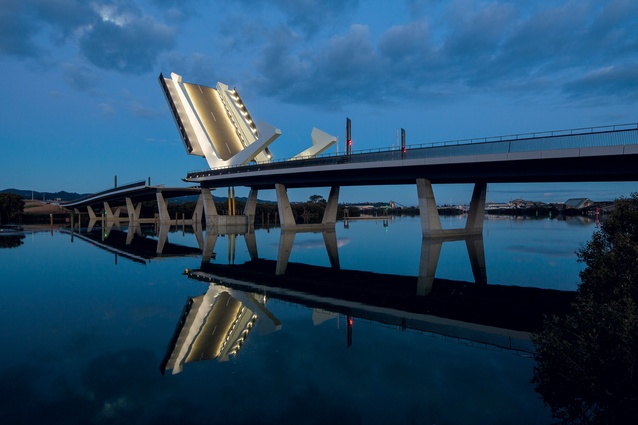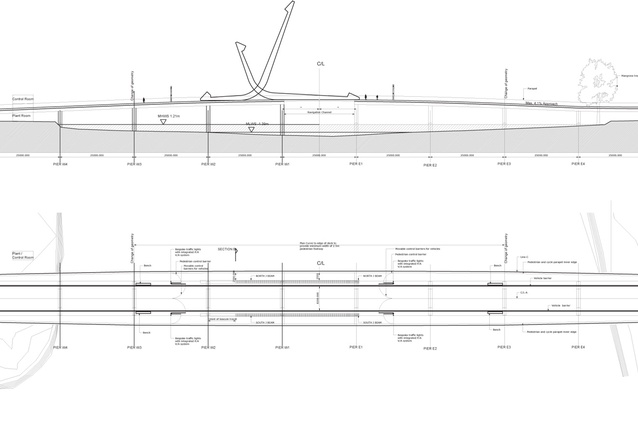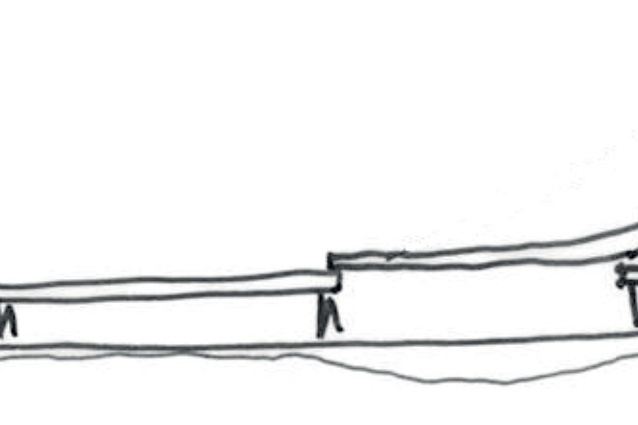Lower Hatea Crossing Te Matau a Pohe
Crossing a tidal river estuary, Whangarei’s 265m-long Lower Hatea Crossing is a new portion of the highway network, aimed at reducing congestion in the city centre and improving access to the airport and Whangarei Heads. Justine Harvey talks with Martin Knight from Knight Architects, specialist bridge architects based in the UK.
I’ve heard a lot of positive comments about Lower Hatea Bridge.
The bridge design broadly appeals to the public in a way that architecture and buildings often don’t. People understand it; they feel that bridges are less complex or challenging than is most architecture and, because they’re public and out in the fresh air, they tend to become landmarks. They sort of define a sense of place rather more than buildings do.
There’s the aspect of ‘a journey’ and being part of the landscape, especially somewhere like New Zealand where we have a beautiful landscape – although many countries do, ours is quite distinctive in its variety.
You’ve some pretty good landscapes, I have to say.
It’s fairly unspoilt – although we’ve spoilt quite a bit of it, we still have a lot left, put it that way. So what led you into primarily bridge design; it’s an unusual specialist area isn’t it?
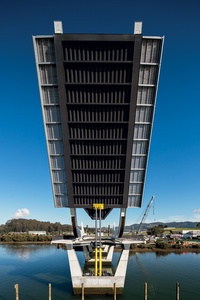
Yeah I guess so.
I’ve been working on bridge design for 18 years.
How did you find out about the Lower Hatea competition?
Well, it’s the modern thing. The New Zealand contact was the Auckland engineer Duncan Peters, who Googled ‘mechanical engineers’ or ‘lifting bridges’ and came across the name of the mechanical engineer. Duncan phoned Mike Fairgood up and asked, “Do you want to do this job and do you know an architect?” Mike said “yes” and gave me a ring. I spent at least a night thinking about it but then I looked into it; I spoke with very good friends who live in Paihia and decided it was worth a go.
You had somewhere to stay.
Actually, more than anything I needed a guide: somebody I could rely on in terms of the influence on the design and my whole experience of certainly Northland but also New Zealand culture.
That’s important because obviously we’re English speaking and we were a colonial country with a lot of similarities but, culturally, it’s different.
Oh, completely. In a way, the landscape and cities like Auckland are familiar but a lot of the cultural influences are profoundly different. Most obviously, the influence of the south seas is extraordinary.
What happened once you’d been contacted?
Duncan put the team together but we were then formally brought on board by McConnell Dowell – the contractor. They formed a joint venture with Transfield Services and put the bid together. I think there were six or seven contractor-led teams who applied to the local council and we were invited for an interview. I couldn’t go but Mike Fairgood, the mechanical engineer, flew out for that interview. Where others proposed designs, we didn’t; we based it on experience and how we would work with them and that was, as it turns out, the successful approach.
It’s interesting that you won it in that way. It’s indicative of the New Zealand way, which I struggle with sometimes because I think the design is paramount as well.
I tend to agree, although in some instances (it works) and this is one of them, I think.
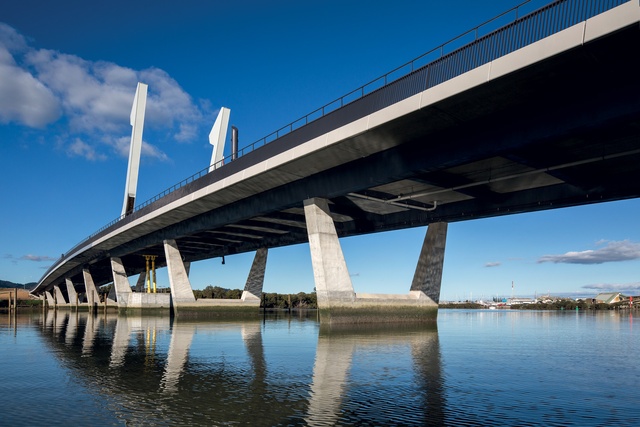
Well, it went in your favour and we ended up with a great bridge that we wouldn’t have had otherwise.
Yeah, it wasn’t necessarily a tactic.
I mean, they asked for a quality cost bid, so I’m sure cost was part of it. One of the things that we made very clear to the Council was that when it comes to bridge design, and especially moving bridge design, you have to get the brief 100 per cent right before you start running. You have to walk first and they didn’t have a brief that was formed, so they didn’t know how frequently they wanted to operate the bridge, how quickly they needed to do it, what type of system they wanted or the maintenance requirements of different systems. There were technical aspects and it’s actually really helpful to have a contractor and a consultant on board to guide.
In terms of the design concept, what was your thinking?
It was fairly intensive. The meeting with the client was pivotal because they had a multi-layered brief: a very clear highway brief that had been worked out by the highway engineers and the Council and had been costed with NZTA and the costs shared between those two parties had been worked out and so on. The Council also saw an opportunity for the bridge to be a landmark and to reinforce the sense of place. Whilst the function of the bridge is primarily to take traffic away from the CBD, they also wanted to attract people off Highway 1 and bring tourism into that part of Whangarei.
The elected councillors were anxious about the public reaction if they had to sit and wait a long time for boats to go through, so there was a real emphasis on the bridge operating quickly and that was the key thing because that led directly to the choice of mechanism. In fact, the final part of the mix turned out to be the most liberating and interesting because, clearly, there’s a cultural sensitivity about the project – it links to Pohe Island which historically had been Maori fishing grounds and, over time, that use had been undermined and ultimately ruined by the use of the area for landfill.
So there was a wish to address that in a positive way and, over the course of the whole project, I think the Council really embraced the Maori community. There are three (iwi) that are particularly close to the location of the bridge; I think their original position was not supported but that was turned around by positive engagement on all sides. If you start with a bridge design that is a logo, then you’re going to fail but we started with a very clear technical solution, the rolling bascule; there’s another example that connects Auckland’s Eastern Viaduct Harbour with Te Wero Island.
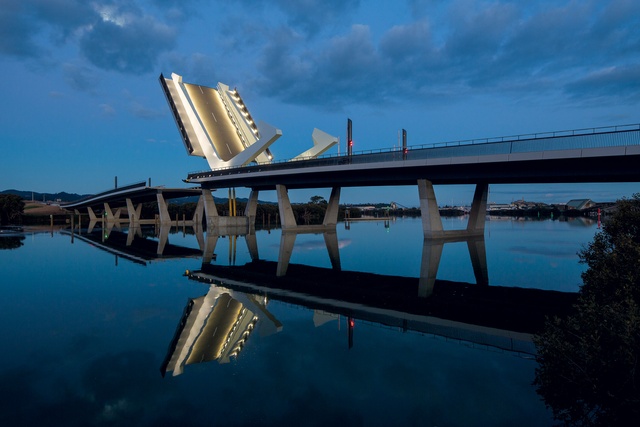
They were quite popular at the start of last century. Basically, you have a beam and a curved beam on the back of it, and a mechanism rolls the bridge as it raises it, so the real benefit is that, as you’re lifting the bridge, it’s also moving away from the river or the water and that makes it quicker.
So, it’s a perfectly functional, logical thing to do but what it starts to do is imply a form that then gives you an architectural opportunity. Once you start drawing that sort of ‘J’ shape, the leap to the fish-hook form is not particularly big. In fact, probably the most difficult thing to do is to keep that relatively subtle as an architectural motif, rather than something that’s very literal and is going to date quickly.
I hope we’ve pulled it off. People have said to me that it looks like a fish hook or the prow of a waka or a whalebone. I think you can give a bridge a very clear identity but still allow room for people to interpret it how they wish; then it becomes their bridge. They take ownership of a project then; that’s the real success.
Did you come over for the unveiling?
I flew over for the opening under my own steam but I really wanted to see the finished bridge and peoples’ reactions, and I wanted to see how well it was built; I was completely blown away. I was so excited to see the bridge but, genuinely, it is the most beautifully built and assembled structure I’ve worked on. It’s just extraordinarily good.
Why do you think that was?
I don’t think you can put your finger on anything but it reminded me of the Gateshead Millennium bridge that I worked on from 1997 to 2002; that was another rare project where you get people so excited and proud of their bridge that they take ownership of it.
It felt so different and fresh at the time; it was kind of a revelation when it was built but also beautifully done. So, what was the brief in terms of the boats going underneath Lower Hatea?
I think we had to achieve an unlimited vertical clearance over 60m wide. The key dimensions defined an envelope that we had to work with. One of the interesting and slightly challenging aspects of the design development was trying to balance all the competing constraints. So we wanted to minimise the weight, optimise the centre of gravity, reduce the amount of energy required to lift it and the like, but we had to do that within the geometry of the navigation span.
But that was fun. We built a model in which you could control all of the different parameters individually and you could relate them to each other so we could vary the length of the cylinder. The hydraulics became critical because they could be sourced only from certain companies, so we were forever trying to optimise the length of the hydraulics to find a more cost-effective way of sourcing them.
But if you changed the length of the hydraulics, you had more counterweight so there was a push between a number of different constraints. But I think we achieved an optimum solution in terms of material and energy very quickly because of the model that we built. It would have taken a horrifically long time if we hadn’t done that.
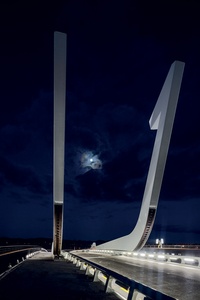
What kind of model?
It’s a three-dimensional model using a piece of software called Rhinoceros and a plugin software that you can control
it with called Grasshopper.
And in terms of the mechanism, how did you end up with the rolling bascule?
One of the things you need to know when designing a lifting bridge is how long the span is and how heavy it is and there was quite a lot of discussion about reducing the opening span to save money. And also you can’t really accurately know the weight or mass of it, to be more accurate, until you’ve done a certain amount of design work and so there was all this pressure there to move the design forward in order to get the maths. And then we looked at various ways of doing it.
We wanted the opening movement to be effortless, to look effortless and there are all kinds of ways of moving a bridge and most of them look anything but effortless, so the very first sketch I ever did had a pair of hydraulic cylinders underneath it pushing upwards and we came back to that having explored every other possible option… On moving bridges, the mechanism is everything; it has to move and, if you get the mechanism wrong, it becomes unreliable – a blockage that’s clearly not acceptable – so it’s important not to rush that stage. You must get it right.
It’s interesting because some clients push the design process very hard but at what cost?
In bridge design, the codes that we work to, generally speaking, specify a design life of a 100 or 120 years, which immediately puts you into a different mind-set to building engineering where the structure might be designed for 50 years, the cladding might be designed for 15. What you are designing is the infrastructure for your children’s children. I live very near the Great Western Railway and the Maidenhead Railway Bridge which carries the railway over the River Thames, designed by Brunel in 1838 and the trains still go over it. They go over with a frequency and a speed and a weight that Brunel probably couldn’t have even imagined but we rely on that line now infinitely more than they did in Victorian times.
I use that example in lectures quite frequently. It’s a really powerful reminder that time passes quickly and quality really endures. You rely on that quality and, the longer you rely on it, the more important it becomes. I think when we’re designing infrastructure we have to design it with a very long mindset because people have to live with it and they have to accept it. Because of that, I think we should try and avoid fashionable projects or statements that become unfashionable and instead promote solid, robust design, where the corners have not been cut.
Lower Hatea was a very good example of a good relationship between a contractor and a client where there were pressures on budget as you’d expect and, in some areas, they took the decision to cut costs. But, in other areas they took a decision to take a hit and they did that because of the long-term quality of the project so I think that’s admirable.

